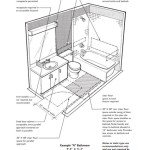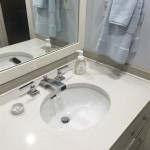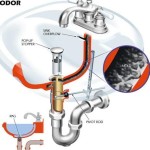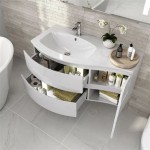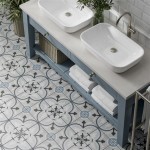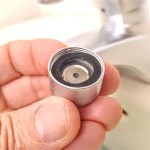10-Inch Deep Bathroom Sink Cabinets: A Comprehensive Guide
Bathroom renovations often require maximizing existing space while maintaining both functionality and aesthetic appeal. In constrained bathrooms, standard depth cabinets can impede movement and visual flow. 10-inch deep bathroom sink cabinets provide a practical solution, offering storage without significantly encroaching on available floor space. This article provides a detailed examination of 10-inch deep bathroom sink cabinets, covering design considerations, material choices, installation factors, and their suitability for various bathroom settings.
Understanding the Advantages of Shallow Depth Cabinets
The primary benefit of a 10-inch deep bathroom sink cabinet lies in its space-saving profile. Traditional bathroom vanities typically range from 18 to 24 inches in depth, which can be problematic in powder rooms, guest bathrooms, or en-suite bathrooms with limited square footage. Reducing the cabinet depth to 10 inches creates more open space, improving maneuverability and making the bathroom feel less cramped.
Beyond spatial efficiency, shallow depth cabinets can also contribute to a cleaner, more minimalist aesthetic. By minimizing the visual bulk of the cabinet, the focus shifts to other design elements in the bathroom, such as the sink, faucet, and wall decor. This can be particularly beneficial in contemporary or modern bathrooms where clean lines and uncluttered surfaces are desired.
Furthermore, a 10-inch deep cabinet encourages a more organized approach to bathroom storage. Due to the reduced depth, users are more likely to carefully curate the items stored within, prioritizing essential toiletries and accessories. This can lead to a more streamlined and functional bathroom experience.
However, it is important to acknowledge the limitations of a shallow depth cabinet. The reduced storage capacity means that larger items, such as bulky cleaning supplies or multiple rolls of toilet paper, may not fit comfortably. Careful consideration of storage needs is essential before opting for a 10-inch deep cabinet.
Design and Style Considerations for 10-Inch Deep Cabinets
When selecting a 10-inch deep bathroom sink cabinet, numerous design and style options are available to complement various bathroom aesthetics. The cabinet can be designed as a freestanding unit, a wall-mounted unit, or even a corner unit, depending on the specific spatial constraints and design preferences.
Freestanding cabinets offer flexibility in terms of placement and can be easily moved if necessary. Wall-mounted cabinets, on the other hand, create a floating effect, enhancing the sense of spaciousness and simplifying floor cleaning. Corner units are particularly effective in maximizing space utilization in smaller bathrooms.
The style of the cabinet can range from traditional to contemporary, with options available in various wood finishes, paint colors, and hardware styles. Traditional cabinets often feature raised panel doors, ornate detailing, and antique-style hardware. Contemporary cabinets typically incorporate clean lines, minimalist designs, and sleek, modern hardware.
The choice of countertop material also plays a crucial role in the overall aesthetic. Popular countertop materials include granite, quartz, marble, and solid surface options. Granite and marble offer a luxurious and durable surface, while quartz provides a more consistent color and pattern. Solid surface countertops are known for their non-porous properties and resistance to stains and bacteria.
The sink design should also be carefully considered. Vessel sinks, which sit on top of the countertop, can add visual interest and maximize storage space within the cabinet. Undermount sinks, which are installed below the countertop, create a seamless and easy-to-clean surface. Integrated sinks, which are molded directly into the countertop, offer a streamlined and modern look.
In addition to the cabinet itself, the choice of faucet and hardware can significantly impact the overall design. A wide range of faucet styles are available, from traditional lever handles to contemporary single-handle designs. Hardware options include knobs, pulls, and handles in various finishes, such as chrome, brushed nickel, and oil-rubbed bronze.
Material Selection and Durability
The longevity and performance of a 10-inch deep bathroom sink cabinet depend heavily on the materials used in its construction. Several factors should be considered when selecting materials, including durability, water resistance, and aesthetic appeal.
Solid wood is a popular choice for bathroom cabinets due to its natural beauty and durability. Hardwoods such as oak, maple, and cherry are particularly well-suited for bathroom environments due to their resistance to moisture and warping. However, solid wood cabinets can be more expensive than other options.
Plywood is another common material used in cabinet construction. High-quality plywood, such as marine-grade plywood, offers excellent water resistance and stability. Plywood is typically more affordable than solid wood and can be easily finished with paint or stain.
Medium-density fiberboard (MDF) is a composite material made from wood fibers and resin. MDF is a cost-effective option that provides a smooth and uniform surface for painting or laminating. However, MDF is more susceptible to water damage than solid wood or plywood and should be properly sealed and protected from moisture.
Laminate and thermofoil are popular surface finishes for bathroom cabinets. Laminate is a thin layer of plastic that is bonded to a substrate material, such as MDF or plywood. Laminate is durable, water-resistant, and available in a wide range of colors and patterns. Thermofoil is a vinyl coating that is heat-sealed to a substrate material. Thermofoil offers a seamless and easy-to-clean surface.
The choice of hardware, such as hinges and drawer slides, is also important for the durability and functionality of the cabinet. High-quality hardware made from stainless steel or other corrosion-resistant materials will ensure smooth operation and long-lasting performance.
Finally, the countertop material should be carefully selected to withstand the daily demands of a bathroom environment. Granite, quartz, and solid surface countertops are all durable and water-resistant options that can provide years of reliable service.
Installation Considerations and Plumbing Adjustments
Installing a 10-inch deep bathroom sink cabinet requires careful planning and execution. Before beginning the installation, it is essential to measure the available space and ensure that the cabinet will fit comfortably without obstructing doorways or other fixtures.
For wall-mounted cabinets, it is crucial to locate the wall studs and securely attach the cabinet to the studs using appropriate hardware. Failing to properly secure the cabinet to the studs can result in instability and potential damage.
Plumbing adjustments may be necessary to accommodate the shallow depth of the cabinet. The drainpipe and water supply lines may need to be shortened or reconfigured to fit within the limited space. It is advisable to consult with a qualified plumber to ensure that the plumbing adjustments are performed correctly and in accordance with local building codes.
The placement of the sink and faucet should also be carefully considered. Ensure that the sink is properly aligned with the drainpipe and that the faucet is positioned to provide adequate water flow without splashing. The height of the countertop should be comfortable for the user, typically around 30 to 36 inches from the floor.
Once the cabinet is installed and the plumbing is connected, it is important to thoroughly inspect for leaks. Run the water and check all connections to ensure that there are no drips or leaks. Any leaks should be addressed immediately to prevent water damage.
Finally, caulk around the edges of the countertop and backsplash to create a watertight seal and prevent moisture from seeping behind the cabinet. Use a high-quality silicone caulk that is specifically designed for bathroom environments.
Appropriate Bathroom Settings for 10-Inch Deep Cabinets
10-inch deep bathroom sink cabinets are not universally suitable for all bathroom settings. Their advantages are most pronounced in specific situations where space is at a premium or a minimalist aesthetic is desired. Understanding which bathroom types benefit most is crucial for effective design choices.
Powder Rooms: These small, often half-bathrooms, typically located near living areas, are ideal candidates for 10-inch deep cabinets. The limited floor space necessitates a compact vanity solution. Since powder rooms primarily serve guest use for handwashing and hygiene, extensive storage is typically not required, making the reduced depth a viable option. A stylish, shallow cabinet can enhance the room's aesthetic without overwhelming the available space.
Guest Bathrooms: Similar to powder rooms, guest bathrooms often prioritize space efficiency over extensive storage. Guests typically bring their own toiletries, reducing the need for a large vanity. A 10-inch deep cabinet provides sufficient space for basic necessities while maintaining a comfortable and uncluttered environment for visitors.
En-suite Bathrooms with Limited Space: In smaller en-suite bathrooms connected to bedrooms, a 10-inch deep cabinet can create a more open and airy feel. These bathrooms may feature other space-saving measures, such as wall-mounted toilets or corner showers, making a shallow cabinet a logical addition. The reduced depth allows for easier movement within the bathroom and prevents the vanity from dominating the space.
Bathrooms with Unique Layouts: Bathrooms with unconventional layouts, such as those featuring angled walls or tight corners, can benefit from the adaptability of 10-inch deep cabinets. These cabinets can be custom-designed to fit specific spatial constraints, maximizing storage potential while minimizing encroachment on the available floor space. Corner units or wall-mounted options can be particularly effective in these situations.
While 10-inch deep cabinets offer significant advantages in certain settings, they may not be suitable for larger, master bathrooms where ample storage is required. In these bathrooms, a deeper cabinet is typically necessary to accommodate the extensive toiletries and accessories used by multiple occupants. However, even in larger bathrooms, a 10-inch deep cabinet could be used as a secondary vanity or a supplemental storage unit.

Design Element Bristol 18 5 In W X 10 D Bath Vanity Walnut With Porcelain Top White Basin Dec4019s The Home Depot

Design Element Bristol 18 5 In W X 10 D Bath Vanity Walnut With Porcelain Top White Basin Dec4019s The Home Depot

Narrow Depth Bathroom Vanities Signature Hardware

Angeles Home 18 11 In W X 10 D 23 6 H Floating Bath Vanity Brown Ebony With Ceramic Single Sink Top Soft Close Door Bvb Ck03018bre The Depot

Bathroom Vanity Styles To Fit Your Space Forbes Home

Narrow Bathroom Vanities With 8 18 Inches Of Depth

18 Nadiya Wall Mount Vessel Sink Vanity Chestnut Brown No Faucet Drillings Signature Hardware

10 Bathroom Vanity Features Pros Always Recommend

Narrow Bathroom Vanities With 8 18 Inches Of Depth
Bathroom Vanity Guide Signature Hardware
Related Posts
